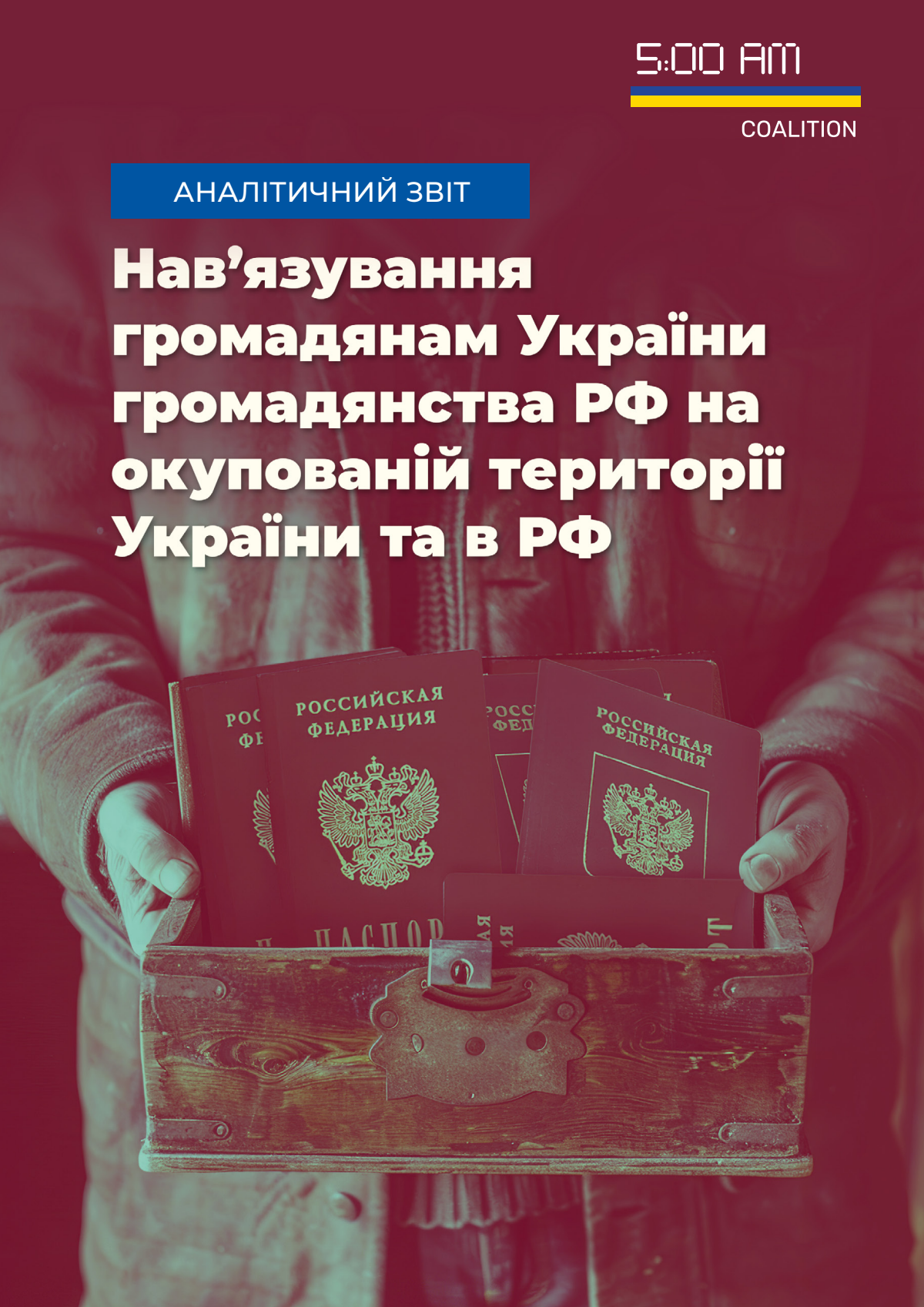After the start of the invasion of Ukraine in 2014, the Russian Federation began to use tools to impose Russian citizenship on the population of the occupied territories. The first victims of this policy were residents of the occupied Crimea. The Russian Federation began to automatically consider all those who lived on the peninsula at the time of its occupation to be Russian citizens unless they filed an application for renunciation of Russian citizenship within a month. The next step was the imposition of Russian citizenship in certain areas of Donetsk and Luhansk regions, which, unlike in Crimea, took the form of simplifying the acquisition of citizenship while restricting the rights of persons who had not obtained Russian citizenship. With the start of the full-scale invasion of the occupied territories of Donetsk, Luhansk, Kherson and Zaporizhzhia regions, Russia continued to implement this scenario: Russian citizenship is possible under a simplified procedure, which involves submitting an application for renunciation of Ukrainian citizenship. At the same time, the Russian occupation authorities are more actively than before using the practice of creating conditions under which it becomes impossible for Ukrainians to live in the occupied territory in the absence of a Russian passport.




